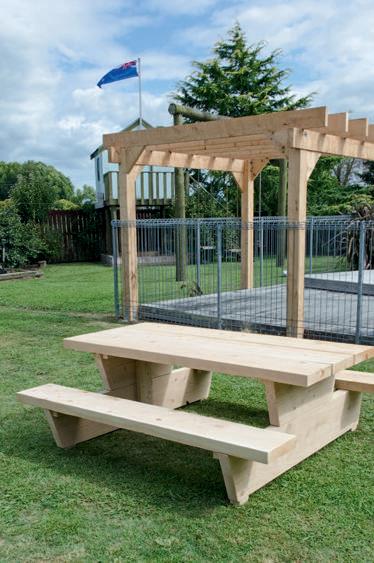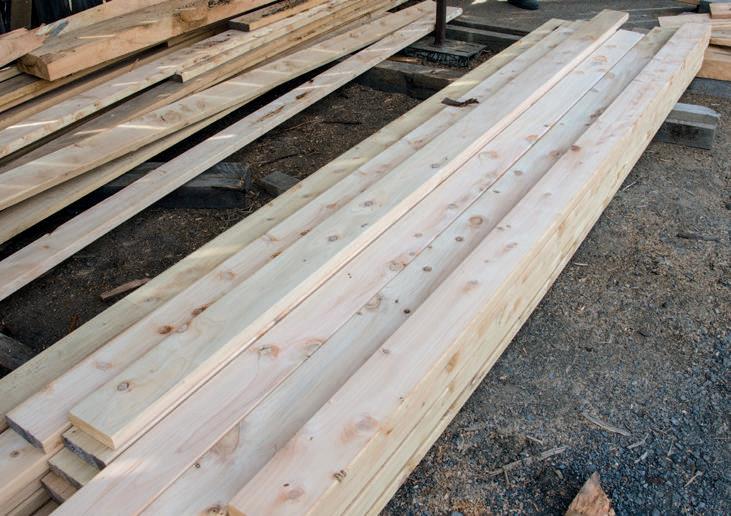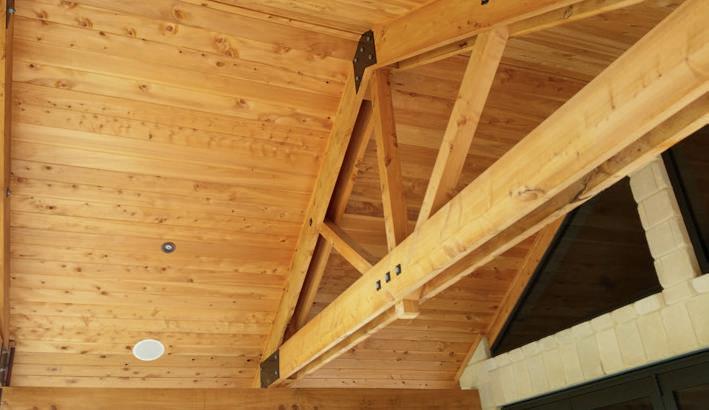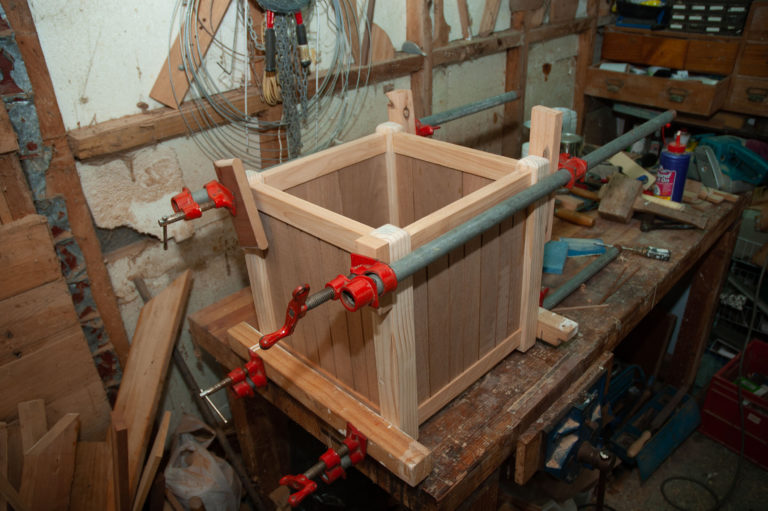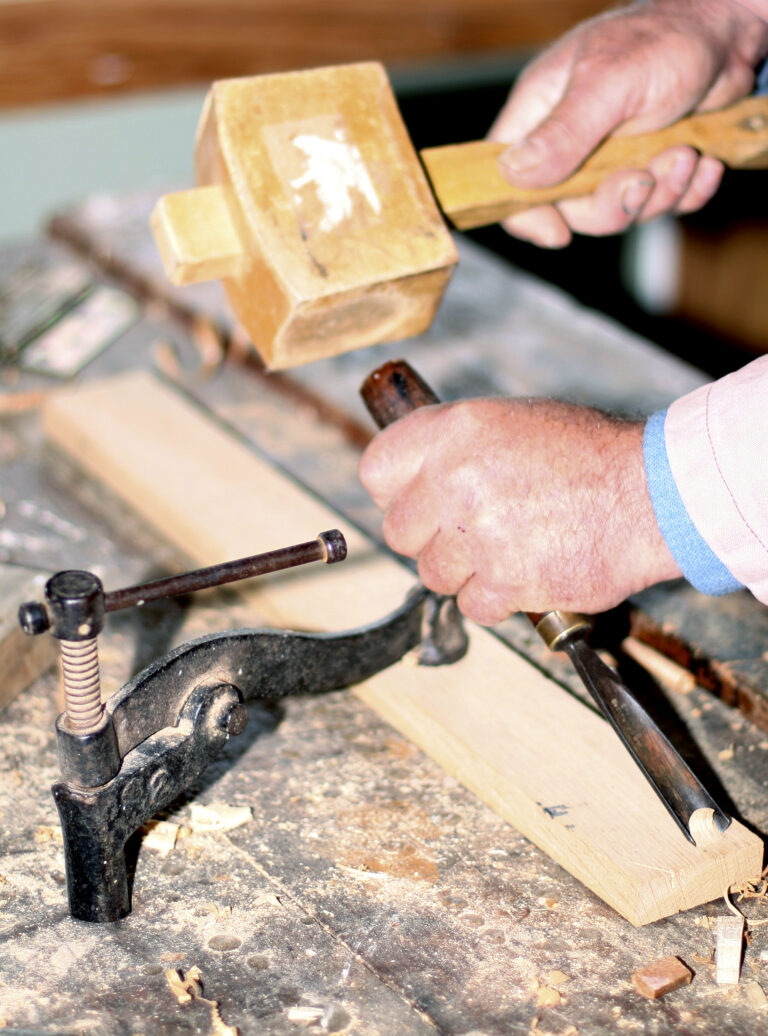Macropcarpa is a great eco alternative to treated timber.
By Jude Woodside
Cupressus Macrocarpa
Macrocarpa (Cupressus macrocarpa or Monterey cypress) is a native of Southern California that like another Californian species from the same Monterey area (Pinus radiata) found New Zealand to be a more comfortable environment and thrived here. It grows faster and larger here than in its native environment, possibly due to the lack of pathogens that beset it in its home environment.
In New Zealand it was traditionally used for fence battens and posts. Posts made from heart timber will last for 20 years in soil and battens can last longer. It was often grown for windbreaks on farms and for a time the majority of the timber available came from shelterbelts and untended woodlots where the growing conditions were less than ideal and thus the proliferation of timber with very twisted grain may have given the timber a bad reputation for furniture uses. In the 1970s and ’80s some farm forestry lots were trialled but most were abandoned due to cypress canker—a fungal disease—and the trees fell out of favour with foresters. But currently there are at least 18 species of cypress grown here, the most popular being Cupressus lusitanica, or Mexican white cedar, which is resistant to canker.
Macrocarpa has very little sapwood. These cut logs show sapwood quite clearly as a lighter area.
Plantation grown and properly pruned it will grow straight and provide long, clear lengths. It grows nearly as fast as radiata.
In many respects Macrocarpa lusitanica is a better building timber than radiata, particularly in the durability stakes. As macrocarpa is a cypress it has natural oils that deter insects and fungal growth making the timber the equivalent of H3.2 for use above ground. So it can be used without having to resort to the toxic trio of copper, chromium and arsenic (chromated copper arsenate or CCA) with which radiata is treated to achieve the same durability. The aromatic content of the wood also makes it an ideal choice for use in pantries and kitchen cabinetry where it will naturally deter moths and ants.
Lusitancia is a closely related species often included as macrocarpa
Close grain
Macrocarpa is also a good furniture timber although the curly grain of the timber requires well-sharpened blades for work to avoid the risk of grain tear out. The timber also needs to be dried carefully to prevent checks and collapse. It is usually air dried rst before being kiln dried.
Macrocarpa is a soft timber but works easily and it is slightly harder than radiata. It has a close grain similar to kauri and will turn well. It does need to be predrilled for screws or nails due to a tendency to split, especially when the wood is well dried. It will sand to a lustrous nish and will take oil nishes and varnishes well.
Macrocarpa has a large quantity of heartwood that is more durable than the sapwood. The heartwood is a golden honey colour that will become more pronounced over time with exposure to air. This process is enhanced with a protective coating such as oil or varnish. Exposed to the outdoors macrocarpa, like most timbers, will age to a silver-grey colour but it retains its durability outdoors where it is often used for chainsaw-carved benches and outdoor picnic tables. Its durability, especially in larger-sized pieces, and its eco friendliness make it popular for raised garden beds and compost bins.
Breaking down macrocarpa logs
Macrocarpa, unlike radiata, has very little sapwood. Given the high ratio of heartwood to sapwood it’s surprising that macrocarpa has been neglected for so long as a framing timber. As it requires no CCA treatment the timber is delivered dry, not weeping from the preservative, and thus is less subject to warping after installation. Sawdust and general handling poses less of a health hazard than CCA-treated timber too.
It has been traditionally used for exposed beam ceilings but is becoming more and more popular as a cost- effective weatherboard alternative to cedar. It’s also seeing more usage as T&G panelling and sarking where the colour and natural defects can provide visual interest too. Macrocarpa is also used in ooring overlays, gates and fences, slab tables and bench and bar tops, cabinet making and boat building.
1: Dressed macrocarpa boards 2: Some of the varied outdoor uses for macrocarpa 3: Macrocarpa used as interior lining material. The trusses are also
Wood movement
All wood will move with humidity and temperature in general and it will move in two main directions
•TANGENTIAL: Where the wood moves along the lines of the growth rings in timber this is a side-to-side movement. If you picture the growth rings as a circle around the tree then this movement is at a tangent to the growth rings.
• RADIAL: This is movement perpendicular to the growth rings. It will also move along the length of the timber (longitudinally) but this movement is small enough to be ignored. The movement is in the direction of the radius of the growth rings.

Macrocarpa and lusitanica have very good dimensional stability—better than radiata in tangential and radial shrinkage that means it will swell and shrink less in response to atmospheric humidity. Macrocarpa will also accept most timber adhesives and paints.

